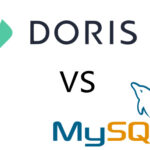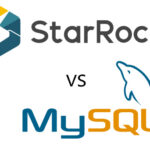Glaredb: A High-Performance, Scalable, and Cloud-Native Relational Database
Introduction
In the realm of databases, MySQL and MongoDB have long been the go-to options for many developers. However, with the ever-increasing demands of modern applications, a new breed of databases has emerged, offering enhanced performance, scalability, and cloud-native capabilities. Glaredb stands out as a prime contender in this category, providing a compelling alternative to traditional relational and NoSQL databases.
Why Glaredb?
Glaredb boasts a plethora of advantages over its predecessors, making it an ideal choice for a wide range of applications. Here are some of the key highlights:
- Unparalleled Performance: Glaredb leverages a unique distributed architecture that enables it to handle massive workloads with exceptional speed and efficiency. Its horizontal scalability allows it to seamlessly scale up or down based on demand, ensuring optimal performance regardless of data volume or traffic spikes.
- Unmatched Scalability: Glaredb’s distributed design empowers it to scale effortlessly across multiple nodes, making it an ideal solution for large-scale, data-intensive applications. It can handle petabytes of data without compromising performance or availability.
- Cloud-Native Expertise: Glaredb is built from the ground up for cloud environments, seamlessly integrating with popular cloud platforms like Amazon Web Services (AWS), Google Cloud Platform (GCP), and Microsoft Azure. This native cloud support streamlines deployment, management, and cost optimization.
- Flexible Data Modeling: Glaredb offers a flexible data modeling approach that empowers developers to create schemas that align perfectly with their application’s data structures. This flexibility eliminates the need for complex data transformations and ensures efficient data storage and retrieval.
- Robust Transaction Support: Glaredb provides ACID (Atomicity, Consistency, Isolation, Durability) compliant transactions, guaranteeing data integrity and consistency even in the face of concurrent operations. This robust transaction support makes Glaredb well-suited for mission-critical applications.
Glaredb vs. MySQL and MongoDB: A Comparative Analysis
| Feature | Glaredb | MySQL | MongoDB |
|---|---|---|---|
| Performance | High | Moderate | High |
| Scalability | Horizontal | Vertical | Horizontal |
| Cloud-Native | Yes | No | Yes |
| Data Modeling | Flexible | Rigid | Flexible |
| Transaction Support | ACID | ACID | Eventual Consistency |
Installing Glaredb on Ubuntu
To experience the power of Glaredb firsthand, follow these steps to install it on your Ubuntu system:
- Prerequisites: Ensure you have Docker installed on your system.
- Download Glaredb: Download the latest Glaredb release from the official GitHub repository.
- Extract and Run Glaredb: Extract the downloaded archive and navigate to the extracted directory. Run the
glaredb startcommand to start the Glaredb server. - Create a Database: Use the
glaredb create databasecommand to create a new database. For example, to create a database namedmy_database, run:
glaredb create database my_database- Connect to Glaredb: Use the
glaredb shellcommand to connect to the Glaredb shell. Once connected, you can interact with the database using SQL queries.
Conclusion
Glaredb emerges as a frontrunner in the database landscape, offering a compelling combination of performance, scalability, cloud-native capabilities, and flexible data modeling. Its ability to handle massive workloads with ease, coupled with its seamless integration with cloud platforms, makes it an ideal choice for modern, data-driven applications. As the demand for high-performance, scalable databases continues to grow, Glaredb is poised to play a pivotal role in shaping the future of data management.







Leave a Reply